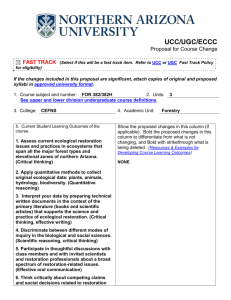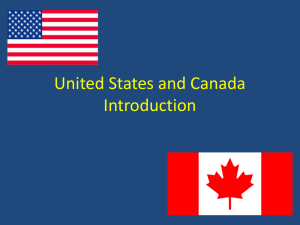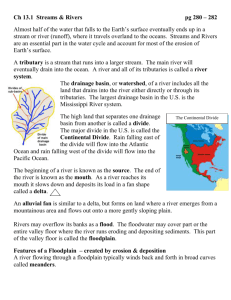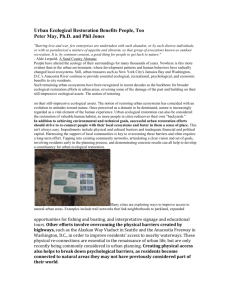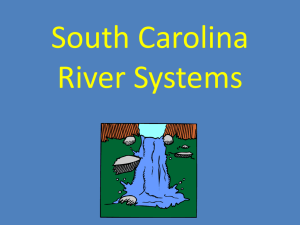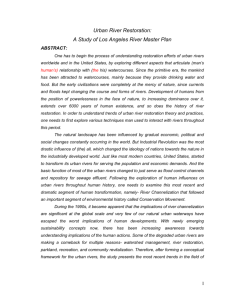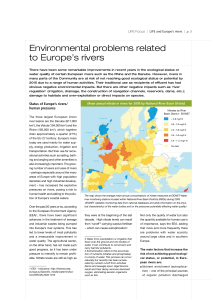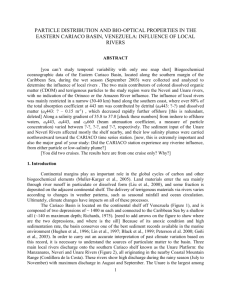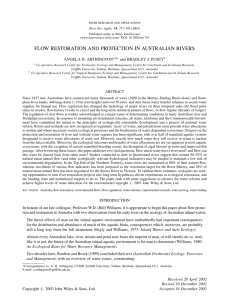DOC - Europa
advertisement
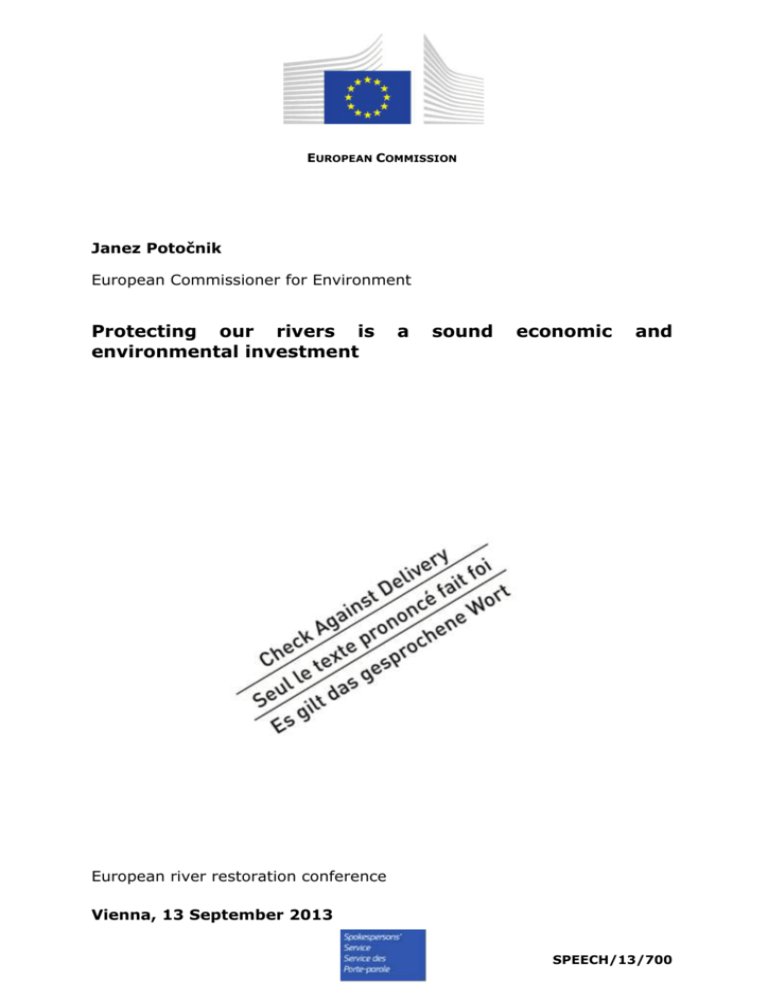
EUROPEAN COMMISSION Janez Potočnik European Commissioner for Environment Protecting our rivers is environmental investment a sound economic and European river restoration conference Vienna, 13 September 2013 SPEECH/13/700 Ladies and Gentlemen, good morning, Let me start by asking you a few questions. Have you ever thought of Paris without the Seine? … What would Lisbon look like if ever the Targus river dried up? ... What would have been the history of Austria, where we are today, without the Danube river? … I know it is a bit of science-fiction but I personally could not imagine my home country, Slovenia, without its Soča river. Europe is rich of water resources … but such resources should not be taken for granted. And this is why the Commission has always given water the utmost priority. The Water Blueprint that we put forward in November last year, sets out a new strategy for the protection of Europe's water resources. It is the fruit of a real collective effort which involved Member States, the water service sector, water-using industries, the scientific community, NGOs, the European Parliament… and you, of course. Its main message is that we need to step up our actions if we are to meet the goal of achieving good water status throughout the EU. However our assessment of more than a hundred River Basin Management Plans prepared by Member States shows the extent of the challenge. On present trends, it is fairly clear that 47% of the waters in the EU will not achieve good status by 2015. In this context, maintaining and restoring the ecological functions of Europe’s rivers in light of growing demands for water, energy and food, and increasing pressures from climate change, are an enormous challenge we have to address. Luckily we do not start from scratch. The results of the RESTORE project (supported by the LIFE programme) which fed into the development of the Water Blueprint, identified several areas for action. I would like to share three of these with you: First, we need to encourage team work, international cooperation on transboundary water bodies, peer review and experience sharing. Together, we will always be stronger. Second, the Blueprint puts considerable emphasis on the knowledge-base for water policy. We propose to continue developing the Water Information System for Europe (WISE) to link it better with national data bases and facilitate decision-makers' access to essential information. The Commission Joint Research Centre's hydro-economic model can help water managers assess the cost-effectiveness of the measures included in their River Basin Management Plans. We look forward to refining this tool so that it can support water managers in their work. And third, for good water management, quality and quantity cannot be separated. Water managers need to know how much water is available before they can allocate it (quantity) and, when doing this, they must take into account what nature needs to deliver its benefits (ecological quality). The problem is that, in many parts of Europe, we do not really have the full picture. Therefore, together with the European Environmental Agency, we have started to address the missing link: water accounts. Only reliable water accounts will help us make sure that water balances in each river basin are within sustainable limits. 2 All of the areas for action proposed in the Blueprint are particularly promising for innovation. Innovation to get better public policies, but also to encourage the private sector to take ideas to market. We need to remain competitive in a market which is on track to double in size by 2030. That is one of the reasons why the Commission has launched a European Innovation Partnership on water. One of the Action Groups created under this Partnership is directly relevant to restoration work, as it aims to develop an agreed methodology to assess the benefits from ecosystems in environment and monetary terms. But these instruments will not fully deliver if we do not do something more. We must act to integrate water policy objectives much more into other policies. Integration of flood risk management is the next challenge. Reducing human casualties and damage to economic activities and the environment caused by floods, are key objectives. The Flood Risk Management Plans required by 2015 under the Floods Directive will play an important role in making this happen. In this respect, the mainstreaming of green infrastructure, particularly natural water retention measures, is essential. River restoration can act as a "green infrastructure" in many ways. The Blueprint proposes the development of guidance on green infrastructure and identifies floodplains, wetlands and buffer strips along river banks, as key measures to be supported. And this line was also echoed in our new strategy on green infrastructure. The recently-agreed reform of the CAP offers some opportunities for this mainstreaming. But we need to make sure that Member States seize them, particularly through their forthcoming rural development plans. Similar opportunities can be exploited by prioritising green infrastructure in EU Cohesion and Structural Funds and in the loans of the European Investment Bank. The Commission is paying particular attention to the inclusion of green infrastructure in the Partnership Agreements negotiated with Member States to identify funding priorities for the next 7 years, as these will cover both rural development and regional and cohesion funds. Integration should also cover research funding. Member States are completing the technical assessment required under the Water Framework Directive to prepare the second River Basin Management Plans in 2015. Since 2011, the Seventh EU Framework Programme has supported the REFORM project on REstoring rivers FOR effective catchment Management with 25 partners from 14 countries, to deliver tools that can benefit all Member States in the 2nd implementation cycle of the Water Framework Directive. *** Ladies and gentlemen, This conference shows that river restoration is a collective adventure which has now spread throughout many parts of Europe. The finalists for the 1 st European RiverPrize which was awarded yesterday are excellent examples. They have experience from a wide range of projects on different types of rivers, the causes of degradation and on deploying different techniques with varying degrees of success. However it is time to move from local and pilot experiences to widespread implementation of restoration measures across European rivers. River restoration is still more common in the north and west of Europe. 3 It is also high time to show that river management is not just about protecting important types of European ecosystems, or about ensuring that rivers provide their vital ecological functions. Restoring rivers also contributes to economic development and improves the quality of life of citizens. Many people think that economic and environmental logics are incompatible. If these people were to attend this event, they would learn that they are wrong. There will always be sceptic people. Our duty is to raise awareness about the services delivered to society by the river ecosystems, such as water and food supply, water purification, flood risk mitigation, erosion control, recreational sites and landscape. These unfortunately are generally overlooked, as our economic and financial system does not currently take account of the true value of natural resources. this is why it is important that we improve the assessment of cost and benefits of river restoration to fully consider the value of ecosystems in the delivery of socio-economic benefits. *** Ladies and gentlemen, The protection of our rivers is a sound economic and environmental investment for our societies. The debate is not about environmental protection or economic development. We can have both. This is the message I would like you to take back home. And please do exploit every opportunity to pass it on. I thank you for your attention. 4


